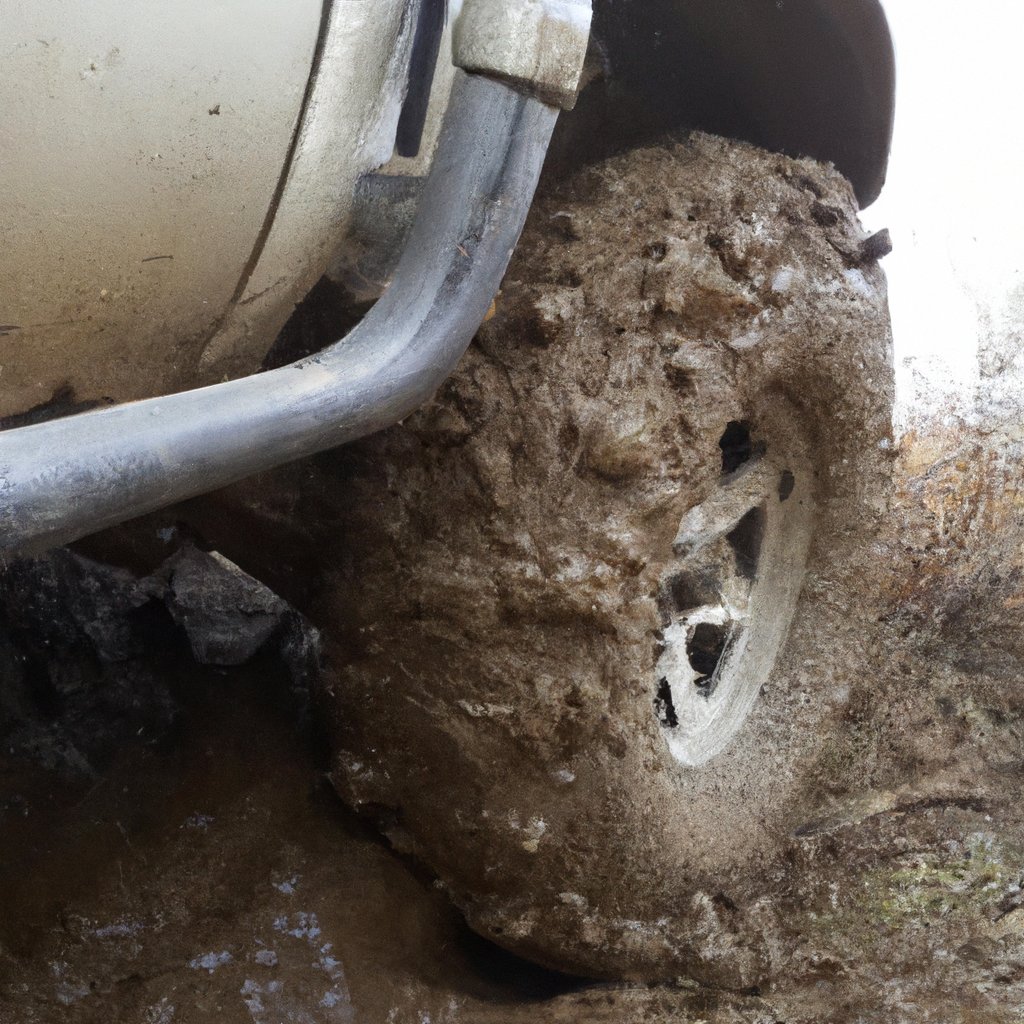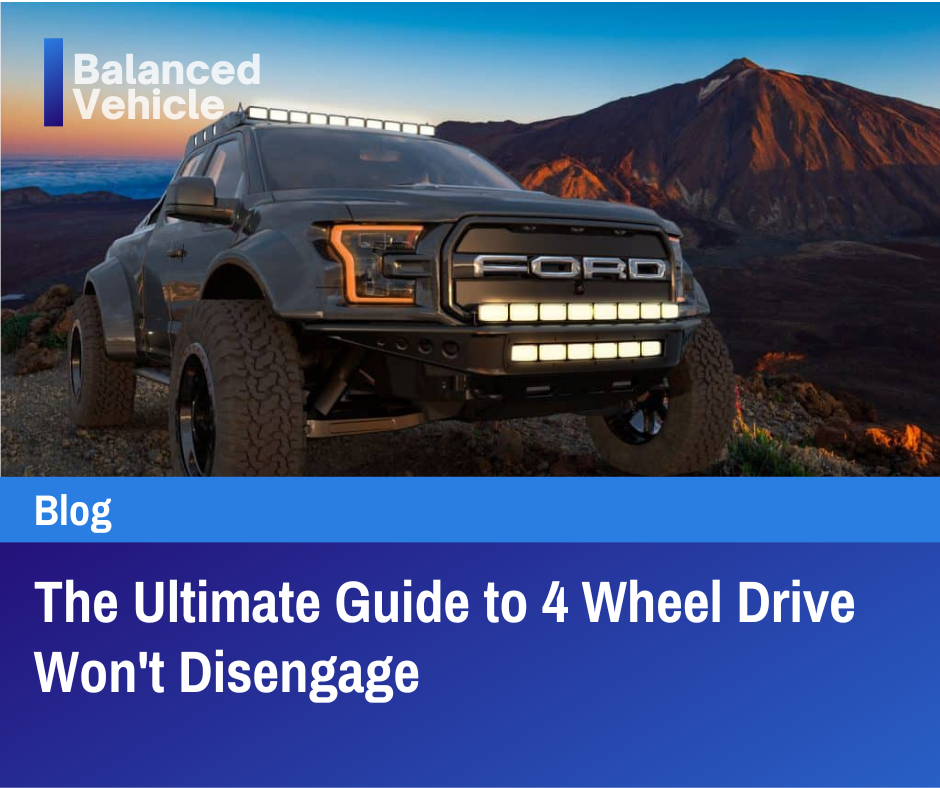Welcome to our Ultimate Guide to 4-Wheel Drive Won’t Disengage. 4-wheel drive vehicles can be in four-wheel mode due to improper lubrication. This is a common problem and is usually not a serious situation. This can result in great inconvenience to an accident victim who has no way of getting where they’re going once they’ve passed a vehicle stuck in four-wheel drive mode. Or is there? If you find yourself in this predicament, don’t despair. You can try a few things to get your 4wd to disengage. So before you call for a tow, check out our tips below.
If your Four-wheel drive doesn’t disengage, try these steps:
- Check the level of lubrication in the system and add more if needed.
- Clean out the engagement mechanism with a brush or compressed air.
- Inspect the parts for wear and tear and replace them if necessary.

Contents
What Is 4-Wheel Drive and Why Is It So Important?
A 4-wheel drive is an essential tool for moving around the world. It can be used for many things, including transporting goods, people, and vehicles. It is also used to get around in cities.
How to Choose the Right 4-Wheel Drive if You Don’t Have One
The self-driving cars have been getting more and more popular. This has led to a spike in the demand for 4-wheel drive vehicles. This is because of the low cost, low maintenance costs, and high speed of these cars.
We can get a better understanding of this by looking at some factors that are important for choosing a 4-wheel drive vehicle. 4 wheel drive system is a vehicle that enables the driver to navigate difficult terrain and access the local area. The most important factor for choosing 4WD is the load capacity of a 4WD car.
Why Won’t My 4 Wheel Drive Disengage?
4-wheel drive is great for getting you through tough spots when you’re off-roading, but it can be a real pain when trying to drive on dry pavement. If your 4-wheel drive doesn’t disengage, there are a few potential reasons why.
- Lack of lubrication: If your 4×4 needs to be properly lubricated, the engagement mechanism can freeze up, preventing it from disengaging.
- Dirt and grime: Over time, dirt and debris can build up in the engagement mechanism, making it harder for it to disengage.
- Worn parts: If the parts in the engagement mechanism are worn out, they may not fully disengage the 4×4 system.
How to Fix a 4-Wheel Drive That Won’t Disengage?
If you have a four-wheel drive vehicle, you may occasionally have to deal with a4 wheel drive that won’t disengage. This can be a frustrating problem, but you can do a few things to try to fix it.
First, check the owner’s manual to see if there is any information on disengaging the 4wd. If not, look online or call the manufacturer to ask for assistance. Sometimes, the 4wd can be cleared by turning a switch or lever inside the vehicle.
If this doesn’t work, you should check the four-wheel drive system. Start by checking the fluids and making sure that everything is full and clean. Next, check the seals and gaskets to ensure they are intact and not leaking. Finally, inspect the drivetrain components for any damaging wear.
If you still have trouble disengaging the 4wd, it is best to take it to a qualified mechanic or dealership for further diagnosis and repair.
When to Use 4-Wheel Drive
Four main reasons to use 4wd are traction, downhill descent control, improved mechanical advantage, and sand driving.
- Traction: Improved traction is the most common use for 4wd. If you frequently slip on snow-covered roads or get stuck in sand, dirt, or other low-traction surfaces, 4wd can give you the extra grip you need to get where you’re going.
- Downhill descent control: If you’re driving on a steep or slippery hill, activating 4wd can help you maintain control of your vehicle. It does this by sending power to all four wheels simultaneously, rather than just the two that are slipping, giving you better traction and braking power.
- Improved mechanical advantage: In some off-road situations, having all four wheels working together can give you a mechanical advantage that can help you get through tough conditions like mud, deep snow, or steep inclines.
- Sand driving: If you frequently drive on soft surfaces like sand, activating 4wd can help prevent your tires from sinking and getting stuck.

Tips for Using 4-Wheel Drive
If your 4-wheel drive doesn’t disengage, you can do a few things to try and fix the issue:
- Check the transfer case fluid level and add fluid if it is low.
- Check the 4×4 fuse and replace it if it is blown.
- Check the 4×4 switch and make sure it is in the correct position.
How to Properly Maintain 4-Wheel Drive
The first step to properly maintaining your four-wheel drive is to ensure you engage and disengage the system properly. When you’re ready to engage the 4-wheel drive, put the car in park and press the button or lever to engage the system. Once the light on your dashboard comes on, you’re good to go. Put the car in park to disengage and press the button or lever again. The light on your dashboard should turn off.
It’s important to note that you should never engage or disengage your four-wheel drive while the vehicle is in motion. Doing so can damage the system and lead to costly repairs.
Another essential step in maintaining your four-wheel drive is to have it serviced regularly by a qualified mechanic. This will ensure that all the components are functioning properly and that no issues could lead to problems.
The Benefits of 4-Wheel Drive
4WD vehicles have several benefits that make them ideal for certain situations. Here are some of the main advantages of 4WD:
- Improved traction and grip: This is the most obvious benefit of 4WD, and it’s why people choose to drive 4WD vehicles. Improved traction and grip mean that you’re less likely to slip and slide on wet or icy roads, and you’ll be able to get up hills and through the mud more easily.
- Increased stability: 4WD vehicles have four wheels connected to the engine, so they’re more stable than 2WD vehicles. This is especially important when driving on rough or uneven terrain.
- Better fuel economy: Contrary to popular belief, 4WD vehicles have better fuel economy than 2WD vehicles. This is because 4WD cars are lighter and have smaller engines.
If you frequently drive in difficult or off-road conditions, a 4WD vehicle is worth considering. Make sure you’re prepared to take care of your vehicle properly, as 4WD vehicles require more maintenance than 2WD vehicles.
The Disadvantages of 4-Wheel Drive
While four-wheel drive offers many advantages, a few disadvantages exist. One of the biggest disadvantages is the increased cost of a four-wheel drive vehicle. Four-wheel drive vehicles often cost several thousand dollars more than comparable two-wheel drive models.
- Another potential downside to four-wheel drive is decreased fuel economy. When engaged, four-wheel movement increases resistance and can reduce fuel economy by as much as 25 percent.
- If you don’t need a four-wheel drive always, it’s important to remember to disengage it when you don’t need it. Failure to do so can lead to premature wear and tear on your vehicle’s components.
- Finally, remember that four-wheel drive does not turn your vehicle into an off-road machine. It is not designed for deep mud or sand, and driving in these conditions can damage your vehicle. If you plan on doing any serious off-roading, you will need a car designed specifically for that purpose.
How to Troubleshoot Four-Wheel Drive Problems
If your 4-wheel drive doesn’t engage, there are a few things you can do to troubleshoot the problem.
- First, check the fuse. If the fuse is blown, it will need to be replaced.
- Next, check the transfer case fluid level. If it is low, add more fluid.
- If neither of these fixes works, you may need to take your vehicle to a mechanic for further diagnosis.
Conclusion
Suppose your 4 Wheel Drive won’t Disengage. The longer you drive this way, the more damage it will do to the gears and other components within your vehicle. If you tried the steps in this article, but your vehicle still won’t disengage, you need to call a certified mechanic.
FAQs About 4-Wheel Drive Won’t Disengage
How Do I Get My 4-Wheel Drive Unstuck?
If your vehicle is stuck in 4wd, follow these steps:
First, put your vehicle into neutral and wait ten seconds or longer.
Next, shift your truck gear into 4wd high and wait another ten seconds.
Now, move your vehicle into 2wd.
How Can You Tell if Your Truck Is Stuck in a 4-Wheel Drive?
A generally obvious issue is if the 4×4 system doesn’t engage. You can often tell by how your vehicle is driving whether all four wheels are being fed power. You may notice jerking motions if you unsuccessfully engage in a 4-wheel drive.
How Do You Diagnose a 4WD Problem?
Move the vehicle about 10 feet to allow the front hubs to engage and lock. Turn your wheels to one side and drive forward. You should feel the vehicle bind or resist rolling along smoothly. If you can not handle the vehicle resisting during the turn, your 4WD is probably not working.

